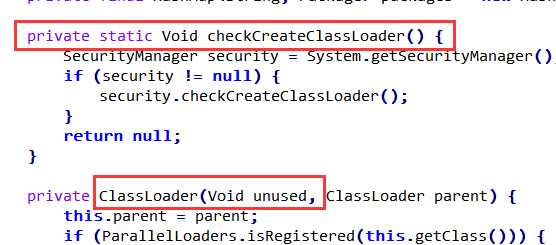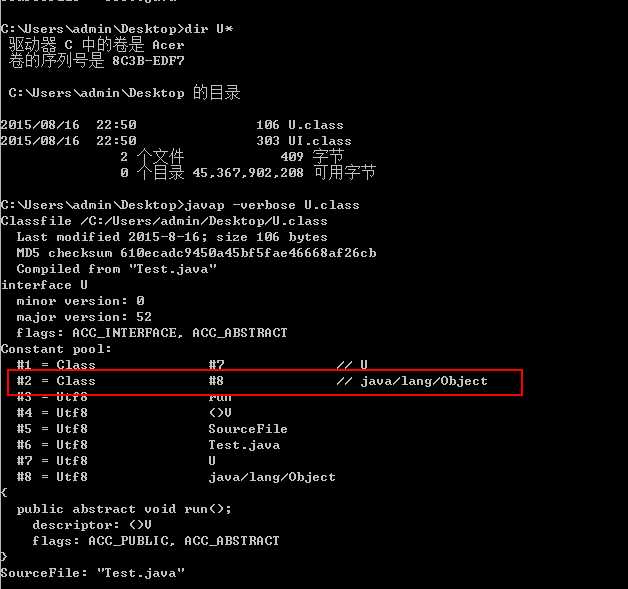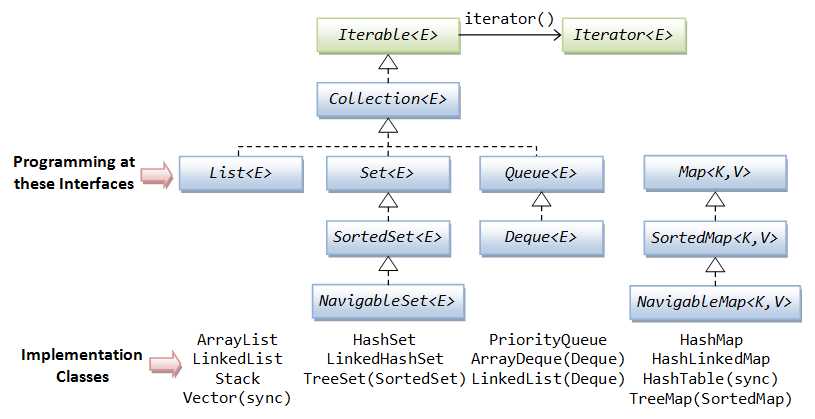标签:
| 数据类型 | 占用位数 | 存储方式 | 最小值 | 最大值 | 默认值 |
| byte | 8 | 1+7 | -128(-2^7) | 127(2^7-1) | 0 |
| short | 16 | 1+15 | -32768(-2^15) | 32767(2^15-1) | 0 |
| int | 32 | 1+31 | -2147483648(-2^31) | 2147483647(2^31-1) | 0 |
| long | 64 | 1+63 | -2^63 | 2^63-1 | 0L |
| float | 32 | 1实数符号位+1指数符号位+7指数位+23实数位 (与整数不同,符号位1为正,0为负,有效位数为1+23位 ) |
1.4E-45 | 3.4028235E38 | 0.0f |
| double | 64 | 1实数符号位+1指数符号位+10位指数位+52实数位 | 4.9E-324 | 1.7976931348623157E308 | 0.0f |
| char | 16 | 0 | 2^16 | 0 | |
| boolean | false |

1 // 自动装箱 2 Integer iobj = 1; 3 Integer iobj = Integer.valueOf(1); 4 // 自动拆箱 5 int i = iboj; 6 int i = iobj.intValue();
特别的,像Integer使用了缓存机制,我看了下Short的源代码也有,别的没去看了
1 Integer i1 = 127; 2 Integer i2 = 127; 3 Integer i3 = 128; 4 Integer i4 = 128; 5 System.out.println(i1 == i2); // true 6 System.out.println(i3 == i4); // false
这个可以在源代码中看到

另外基本数据类型与包装类型可以区分变量是否被赋值
引用数据类型存放对象,对象可分为数组,类对象,接口对象,枚举对象
引用类型变量的值存于栈中,变量引用的对象存在于堆中。
java中数组也是对象,并且继承自Object,这一点就算大家没听过,在ide环境的代码提示下也会看到数组集成了Object的方法
1 int arr [] = new int[12]; 2 System.out.println(arr.getClass().getSuperclass());//class java.lang.Object
接口中方法缺省为abstract public 表示必须实现的抽象方法,字段缺省为public static final,表示全局常量,因为接口要体现比抽象类更高的抽象原则。
另外接口在运行时也应是以Class的方式实现的,并继承自Object类。
看下面的代码
1 interface U { 2 void run(); 3 //void wait(); //Test.java:3: 错误: U中的wait()无法覆盖Object中的wait() 4 } 5 class PU{ 6 public String toString(){ 7 return "PUPU"; 8 } 9 } 10 class UI extends PU implements U{ 11 public void run(){ 12 13 } 14 public String toString(){ 15 return "UU"; 16 } 17 } 18 public class Test{ 19 public static void main(String [] a){ 20 U u = new UI(); 21 System.out.println(u instanceof Object); // true 22 System.out.println(u.toString()); // UU 23 Object obj = u; 24 System.out.println(obj); // UU 25 // 26 System.out.println(Object.class.isAssignableFrom(U.class)); // true 27 System.out.println(U.class.getGenericInterfaces()); // [Ljava.lang.Class;@15db9742 28 System.out.println(UI.class.getGenericInterfaces());// [Ljava.lang.Class;@6d06d69c 29 System.out.println(U.class.getGenericSuperclass()); // null 30 System.out.println(U.class.getSuperclass()); // null 31 System.out.println(U.class.isInterface()); // true 32 33 } 34 }
反编译看U.class也可看到接口与Object存在关系

这里我有个疑问,像上面的UI继承PU类并实现U接口,而按照之前的分析,UI应该应有Object的方法拷贝,那是不是意味着Java虽然不直接支持多继承,但还是不可避免的出现这种疑似多副本的问题,但很显然Java并不存在这个问题。那么Java设计者是怎么做的,像C++虚基类那样么?只保留唯一一个Object的多个引用吗?这个问题暂时没有找到答案。
枚举类型基于类来实现,所有枚举类型继承自java.lang.Enum。从jdk文档中可以看到Enum类有静态方法valueOf方法,但却看不到常用的values方法,那么这个values方法从哪来呢?编译时加的。详情参考文档 http://docs.oracle.com/javase/tutorial/java/javaOO/enum.html 。另外可以发现Enum很神奇的泛型定义,为毛要这么定义,因为Enum要实现Comparable接口,并且只希望同一类系的枚举对象进行比较。参考 http://www.it165.net/pro/html/201305/5643.html
类是java核心,我也见了很多人总在说着java中万物皆对象。类的整个生命周期包括,加载、验证、准备、解析、初始化、使用、销毁,这篇文章写的非常不错。java有好几个类加载器,但很显然总有一个类加载器不是java写的,就像总有一个编译器,是由最底层代码写的。以前看过一篇文章,记得是C++写的。
1、父类静态成员初始化
2、父类静态代码块执行
3、子类静态成员初始化
4、子类静态代码块执行
5、父类构造代码块执行
6、父类构造函数执行
7、子类构造代码块执行
8、子类构造函数执行
1 package org.devlyh.clazz; 2 3 class PClass extends Object{ 4 int anInt = 10; 5 static int sVal = 20; 6 7 static int initVal = init(); 8 static { 9 System.out.println("父类静态代码块执行:"+sVal); 10 sVal = 100; 11 } 12 13 { 14 System.out.println("父类构造代码块执行"); 15 anInt = 30; 16 } 17 18 public PClass(){ 19 System.out.println("父类构造函数执行 :"+anInt); 20 } 21 22 public static int init(){ 23 System.out.println(PClass.class.getName()+"静态成员初始化"); 24 return 1000; 25 } 26 } 27 28 public class ClassInitDemo extends PClass{ 29 private int anInt = 4; 30 31 static private int sVal = 3; 32 33 static int initVal = init(); 34 35 static { 36 System.out.println("子类静态代码执行 sval:"+sVal); 37 sVal = 10; 38 } 39 40 { 41 System.out.println("子类构造代码块执行"); 42 anInt = 10; 43 } 44 45 public static int init(){ 46 System.out.println(ClassInitDemo.class.getName()+"静态成员初始化"); 47 return 1000; 48 } 49 50 public ClassInitDemo(){ 51 System.out.println("子类构造函数执行:"+anInt); 52 System.out.println(this.anInt); 53 System.out.println(super.anInt); 54 System.out.println(sVal); 55 } 56 57 public static void main(String[] args) { 58 new ClassInitDemo(); 59 } 60 61 }
运行结果
1 org.devlyh.clazz.PClass静态成员初始化 2 父类静态代码块执行:20 3 org.devlyh.clazz.ClassInitDemo静态成员初始化 4 子类静态代码执行 sval:3 5 父类构造代码块执行 6 父类构造函数执行 :30 7 anInt:4 8 子类构造代码块执行 9 sval:10 10 子类构造函数执行:10 11 10 12 30 13 10
且注意看,java中类默认继承Object,但我也可以显式继承。静态方法在类被类加载器加载后就存在静态代码区中,所以初始化类的静态成员是,静态方法已经存在
方法的方法名+形参列表构成了方法的签名,返回值和其他修饰符并不能作为签名,因为并不一定能够通过函数调用动态绑定到确定的方法,只有在方法名相同,形参列表不同(形参名无所谓)方可构成重载或重写。重写针对覆想盖父类的方法而言,重载则对该类已经存在的方法定义另一个接口。说到这个我想说下现在包括一些大学老师也持有的错误观点,就是子类不会继承父类的私有属性或方法。我觉得这大错特错,子类的对象拥有父类所有的内容,只是某些内容不可直接访问,但并不代表没有,因此,我觉的java应该有第五种成员权限--不可访问。子类重写父类的方法,不能缩小权限。只能相同或放大。
java有着其非常完善的异常体系,它的基础是Throwable类
以此为两处
Error
Exception
其中Exception的直接子类一般表示编译时异常,只有RuntimeException及其子类,属于运行时异常。
在方法声明上使用throws 可以指明方法可能抛出的异常类,在代码块中,使用throw 实际抛出异常对象,异常的接收者必须处理或者继续向上层调用者抛
1 public class Main{ 2 public static int i = 9; 3 public static void main(String[] args) throws Exception{ 4 exceptionDemo(); 5 } 6 7 public static int exceptionDemo() throws Exception{ 8 // 如果程序没有执行到try代码块,finally也不会执行 9 // exit(); 10 11 try { 12 if(i>10){ 13 throw new Exception("抛出异常"); 14 } 15 // System.exit(0); // 可以是finally块不执行 16 return returnVal();// 先执行return 表达式的计算,再执行finally,再然后返回运算结果,然后弹栈 17 }catch (Exception e){ 18 e.printStackTrace(); 19 }finally { 20 System.out.println("finally执行"); 21 } 22 return returnVal() ;// 先执行finally在执行这里 23 } 24 25 26 public static int returnVal(){ 27 System.out.println("return"); 28 return 0; 29 } 30 31 public static void exit(){ 32 System.exit(0); 33 } 34 }
可以看到finally会在两种情况下不执行
finally和return的执行顺序也更代码位置有关
另外也可以自定义异常
1 public class MyException extends Throwable { 2 protected int level = 0; 3 4 private String location = null; 5 6 public void findLocation(int level) 7 { 8 StackTraceElement element = null; 9 int currentLine; 10 String fileName; 11 element = Thread.currentThread().getStackTrace()[level]; 12 currentLine = element.getLineNumber(); 13 fileName = element.getFileName(); 14 15 location = "File: "+fileName+" Line: "+currentLine; 16 } 17 18 private static final long serialVersionUID = -9198495466584632327L; 19 20 private String info = null; 21 22 public String getInfo() { 23 return info; 24 } 25 26 public void setInfo(String info) { 27 this.info = info; 28 } 29 30 public MyException() { 31 32 } 33 34 public MyException(String info) { 35 this.info = info; 36 } 37 38 public void printInfo(){ 39 System.out.println("Exception Type : "+this.getClass().getName()); 40 System.out.println("Exception Info : "+this.info); 41 System.out.println("Location : "+this.location); 42 } 43 }
泛型
java泛型是伪泛型,程序中的泛型在编译时擦除,以Object或其他对象取代,也就是运行时并不存在泛型。
首先,泛型必须保持一致,例如下面的代码是不行的,哪怕是继承关系
1 Collection<Person> arr = new Collection<Worker>();//这样是不行的,泛型要保持一致,有继承关系也不行。
泛型可以在继承中继续泛型也可明确。
? extends E : 上限 表示可以接受所有E,或继承于E的对象,?是E的子类。一般用于存元素
1 private static void interatorCollection(Collection<? extends Person> arr) { 2 // 这叫泛型的限定,且是上限 3 for (Iterator<? extends Person>iterator = arr.iterator(); iterator.hasNext();) { 4 Person p = iterator.next(); 5 System.out.println(p.getName()+"..."+p.getAge()); 6 // ? it = iterator.next();//这样不行 7 } 8 }
? super E : 下限 表示可以接受所有E,或者派生出E的对象,E是?的子类。
1 private static void interatorCollection(Collection<? super Student> arr) { 2 // 这叫泛型的限定,且是下限 3 for (Iterator<? super Student>iterator = arr.iterator(); iterator.hasNext();) { 4 System.out.println(iterator.next()); 5 // ? it = iterator.next();//这样不行 6 } 7 }
多线程是java的一个亮点,它基于Thread体系
是创建直接接触Thread类或实现Runnable接口,
1 new Thread(new Runnable() { 2 @Override 3 public void run() { 4 System.out.println("Runnable 方法"); 5 } 6 }) { 7 @Override 8 public void run() { 9 System.out.println("Thread子类 方法"); 10 //super.run(); 11 } 12 }.start();
从Thread 的实现也就是jdk的源码不难看出,上面执行的结果输出的是Thread 子类方法
主要是同步代码块、同步方法。也就是加锁
1 import java.util.concurrent.locks.*; 2 3 class BoundedBuffer { 4 final Lock lock = new ReentrantLock(); 5 final Condition notFull = lock.newCondition(); 6 final Condition notEmpty = lock.newCondition(); 7 8 final Object[] items = new Object[100]; 9 int putptr, takeptr, count; 10 11 public void put(Object x) throws InterruptedException { 12 lock.lock(); 13 try { 14 while (count == items.length) 15 notFull.await(); 16 items[putptr] = x; 17 // System.out.println(Thread.currentThread().getName() + "--生产--" + x); 18 if (++putptr == items.length) 19 putptr = 0; 20 ++count; 21 notEmpty.signal(); 22 } finally { 23 lock.unlock(); 24 25 } 26 27 } 28 29 public Object take() throws InterruptedException { 30 lock.lock(); 31 try { 32 while (count == 0) 33 notEmpty.await(); 34 Object x = items[takeptr]; 35 // System.out.println(Thread.currentThread().getName() + "--消费-" + x); 36 if (++takeptr == items.length) 37 takeptr = 0; 38 --count; 39 notFull.signal(); 40 return x; 41 } finally { 42 lock.unlock(); 43 } 44 } 45 } 46 47 class Game implements Runnable { 48 private char ch = ‘你‘; 49 private BoundedBuffer buffer = new BoundedBuffer(); 50 public void run() { 51 show(); 52 } 53 54 private void show() { 55 // TODO 自动生成的方法存根 56 for (int i = 0; i < 6; i++) { 57 try { 58 buffer.put(i); 59 } catch (Exception e) { 60 // TODO: handle exception 61 } 62 try { 63 Thread.sleep(10); 64 } catch (Exception e) { 65 // TODO: handle exception 66 } 67 } 68 } 69 } 70 71 public class ThreadTest_1 { 72 public static void main(String[] args) { 73 // TODO 自动生成的方法存根 74 Game g = new Game(); 75 Thread t1 = new Thread(g); 76 Thread t2 = new Thread(g); 77 t1.start(); 78 t2.start(); 79 80 } 81 }
也就是线程并发库

1 import java.util.Date; 2 import java.util.Timer; 3 import java.util.TimerTask; 4 5 public class TimerDemo { 6 7 public static int i = 0; 8 9 @SuppressWarnings("deprecation") 10 public static void main(String[] args) { 11 class MyTimerTask extends TimerTask{ 12 long [] timer = {2000,3000}; 13 @Override 14 public void run() { 15 System.out.println("bombing"); 16 new Timer().schedule(new MyTimerTask(), timer[i = (i +1)%2]); 17 } 18 } 19 20 new Timer().schedule(new MyTimerTask(), 2000); 21 22 while (true) { 23 System.out.println(new Date().getSeconds()); 24 try { 25 Thread.sleep(1000); 26 } catch (InterruptedException e) { 27 e.printStackTrace(); 28 } 29 } 30 } 31 32 }

1 import java.util.Random; 2 class MyThreadScopeData{ 3 4 private MyThreadScopeData(){} 5 6 public static MyThreadScopeData getInstance(){ 7 MyThreadScopeData mtsd = map.get(); 8 if(null == mtsd){ 9 mtsd = new MyThreadScopeData(); 10 map.set(mtsd); 11 } 12 return mtsd; 13 } 14 private static ThreadLocal<MyThreadScopeData> map = new ThreadLocal<MyThreadScopeData>(); 15 private String name; 16 public String getName() { 17 return name; 18 } 19 public void setName(String name) { 20 this.name = name; 21 } 22 private int age; 23 public int getAge() { 24 return age; 25 } 26 public void setAge(int age) { 27 this.age = age; 28 } 29 } 30 public class ThreadLocalTest { 31 // private static int data = 0; 32 // private static Map<Thread,Integer> threadData = new HashMap<Thread,Integer>(); 33 private static ThreadLocal<Integer> x = new ThreadLocal<Integer>(); 34 public static void main(String[] args) { 35 for(int i=0;i<2;i++){ 36 new Thread(new Runnable() { 37 @Override 38 public void run() { 39 int data = new Random().nextInt(); 40 System.out.println(Thread.currentThread().getName()+ 41 " has put data:"+data); 42 x.set( data); 43 // MyThreadScopeData currentdata = new MyThreadScopeData(); 44 // currentdata.setName("name"+data); 45 // currentdata.setAge(data); 46 // myData.set(currentdata); 47 MyThreadScopeData.getInstance().setName("name"+data);; 48 MyThreadScopeData.getInstance().setAge(data); 49 new A().getData(); 50 new B().getData(); 51 } 52 }).start(); 53 } 54 } 55 56 static class A{ 57 public int getData(){ 58 int data = x.get(); 59 // System.out.println(Thread.currentThread().getName()+ 60 // " get data:"+data); 61 // System.out.println(Thread.currentThread().getName()+ 62 // " get data:"+myData.get().getName()+":"+myData.get().getAge()); 63 MyThreadScopeData mtsd = MyThreadScopeData.getInstance(); 64 System.out.println(Thread.currentThread().getName()+ 65 " get data:"+mtsd.getName()+":"+mtsd.getAge()); 66 67 return data; 68 } 69 } 70 static class B{ 71 public int getData(){ 72 int data = x.get(); 73 // System.out.println(Thread.currentThread().getName()+ 74 // " get data:"+data); 75 // System.out.println(Thread.currentThread().getName()+ 76 // " get data:"+myData.get().getName()+":"+myData.get().getAge()); 77 MyThreadScopeData mtsd = MyThreadScopeData.getInstance(); 78 System.out.println(Thread.currentThread().getName()+ 79 " get data:"+mtsd.getName()+":"+mtsd.getAge()); 80 return data; 81 } 82 } 83 }
用来处理数值加减的原子操作,基本对应了基本数据类型的包装类
public static ExecutorService newFixedThreadPool(int nThreads) 新建一个固定大小的线程池

1 ExecutorService threadPool = Executors.newFixedThreadPool(3);//新建一个固定的线程池,池中可以放3 个线程 2 for(int i=0;i<10;i++){ 3 final int task = i ; 4 threadPool.execute(new Runnable(){ 5 public void run(){ 6 for(int j = 0;j<10;j++){ 7 try { 8 Thread.sleep(20); 9 } catch (InterruptedException e) { 10 e.printStackTrace(); 11 } 12 System.out.println(Thread.currentThread().getName()+ " : "+j +" run "+ task); 13 } 14 } 15 }); 16 } 17 //因为线程池的大小为3,所以每次只有3个任务被进行,某个任务完了,就补充一个进来 18 System.out.println("10 个任务提交完了");
public static ExecutorService newCachedThreadPool() 创建一个可变大小的线程池

1 ExecutorService threadPool = Executors.newCachedThreadPool(); 2 for(int i=0;i<10;i++){ 3 final int task = i ; 4 threadPool.execute(new Runnable(){ 5 public void run(){ 6 for(int j = 0;j<10;j++){ 7 try { 8 Thread.sleep(20); 9 } catch (InterruptedException e) { 10 e.printStackTrace(); 11 } 12 System.out.println(Thread.currentThread().getName()+ " : "+j +" run "+ task); 13 } 14 } 15 }); 16 } 17 //因为线程池的大小可变,可以多个被进行,某个任务完了,就会被删除 18 System.out.println("10 个任务提交完了");
public static ScheduledExecutorService newScheduledThreadPool(int corePoolSize) 创建定时任务线程池

1 Executors.newScheduledThreadPool(3).schedule(new Runnable(){ 2 public void run(){ 3 for(int j = 0;j<10;j++){ 4 try { 5 Thread.sleep(20); 6 } catch (InterruptedException e) { 7 e.printStackTrace(); 8 } 9 System.out.println(Thread.currentThread().getName()+ " : "+j +" run "); 10 } 11 } 12 }, 2, TimeUnit.SECONDS);
等等

1 ExecutorService threadPool = Executors.newSingleThreadExecutor(); 2 Future<String> future = threadPool.submit(new Callable<String>() { 3 @Override 4 public String call() throws Exception { 5 Thread.sleep(1000); 6 return "hello world"; 7 } 8 }); 9 System.out.println("等待结果"); 10 try{ 11 System.out.println("拿到结果:"+future.get()); 12 } 13 catch (Exception e) { 14 e.printStackTrace(); 15 }
这个貌似作用不是很大,也许需要在哪种另一个线程只执行一部分就可产生数据的方法
作用主要是将原来的锁用面向对象的方式封装

1 import java.util.concurrent.locks.Condition; 2 import java.util.concurrent.locks.Lock; 3 import java.util.concurrent.locks.ReentrantLock; 4 5 public class LockTest { 6 7 final Lock lock = new ReentrantLock(); 8 final Condition notFull = lock.newCondition(); 9 final Condition notEmpty = lock.newCondition(); 10 11 final Object[] items = new Object[100]; 12 int putptr, takeptr, count; 13 14 public void put(Object x) throws InterruptedException { 15 lock.lock(); 16 try { 17 while (count == items.length) 18 notFull.await(); 19 items[putptr] = x; 20 if (++putptr == items.length) 21 putptr = 0; 22 ++count; 23 notEmpty.signal(); 24 } finally { 25 lock.unlock(); 26 } 27 } 28 29 public Object take() throws InterruptedException { 30 lock.lock(); 31 try { 32 while (count == 0) 33 notEmpty.await(); 34 Object x = items[takeptr]; 35 if (++takeptr == items.length) 36 takeptr = 0; 37 --count; 38 notFull.signal(); 39 return x; 40 } finally { 41 lock.unlock(); 42 } 43 } 44 45 public static void main(String[] args) { 46 final LockTest lt = new LockTest(); 47 new Thread(put(lt),"生产线程1").start(); 48 new Thread(put(lt),"生产线程2").start(); 49 new Thread(get(lt),"消费线程1").start(); 50 new Thread(get(lt),"消费线程2").start(); 51 52 } 53 54 private static Runnable get(final LockTest lt) { 55 return new Runnable() { 56 @Override 57 public void run() { 58 while(true){ 59 try { 60 System.out.println(Thread.currentThread().getName()+"取得一个"+lt.take()); 61 Thread.sleep(100); 62 } catch (Exception e) { 63 // TODO 自动生成的 catch 块 64 e.printStackTrace(); 65 } 66 } 67 } 68 }; 69 } 70 71 private static Runnable put(final LockTest lt) { 72 return new Runnable() { 73 @Override 74 public void run() { 75 while(true){ 76 try { 77 lt.put("产品"); 78 System.out.println(Thread.currentThread().getName()+"生产了个产品"); 79 Thread.sleep(100); 80 } catch (Exception e) { 81 // TODO 自动生成的 catch 块 82 e.printStackTrace(); 83 } 84 } 85 86 } 87 }; 88 } 89 }

1 import java.util.concurrent.locks.Condition; 2 import java.util.concurrent.locks.Lock; 3 import java.util.concurrent.locks.ReentrantLock; 4 5 public class ThreadTest { 6 public static void main(String[] args) { 7 // TODO 自动生成的方法存根 8 final Lock lock = new ReentrantLock(); 9 final Condition subThread = lock.newCondition(); 10 final Condition mainThread = lock.newCondition(); 11 12 Thread t = new Thread(){ 13 public void run(){ 14 int i = 0; 15 while (true) { 16 // synchronized (ThreadTest.class) { 17 i++; 18 lock.lock(); 19 if (i % 11 == 0) { 20 i = 1; 21 try { 22 mainThread.signal(); 23 subThread.await(); 24 } catch (InterruptedException e) { 25 e.printStackTrace(); 26 } 27 finally{ 28 lock.unlock(); 29 } 30 31 } 32 try { 33 Thread.sleep(20); 34 } catch (InterruptedException e) { 35 // TODO 自动生成的 catch 块 36 e.printStackTrace(); 37 } 38 System.out.println("次线程执行了" + i + "次"); 39 // } 40 } 41 } 42 }; 43 t.start(); 44 try { 45 Thread.sleep(300); 46 } catch (InterruptedException e1) { 47 // TODO 自动生成的 catch 块 48 e1.printStackTrace(); 49 } 50 int n = 0; 51 while(true){ 52 // synchronized (ThreadTest.class) { 53 lock.lock(); 54 n++; 55 if(n%101 == 0){ 56 n = 1; 57 try { 58 subThread.signal(); 59 mainThread.await(); 60 } catch (InterruptedException e) { 61 // TODO 自动生成的 catch 块 62 e.printStackTrace(); 63 } 64 finally{ 65 lock.unlock(); 66 } 67 } 68 try { 69 Thread.sleep(20); 70 } catch (InterruptedException e) { 71 // TODO 自动生成的 catch 块 72 e.printStackTrace(); 73 } 74 System.out.println("主线程执行了"+n+"次"); 75 // } 76 } 77 } 78 79 }
用来控制对资源访问线程的数量
1 import java.util.concurrent.ExecutorService; 2 import java.util.concurrent.Executors; 3 import java.util.concurrent.Semaphore; 4 5 public class SemaphoreTest { 6 public static void main(String[] args) { 7 ExecutorService service = Executors.newCachedThreadPool(); 8 final Semaphore sp = new Semaphore(3); 9 for(int i=0;i<10;i++){ 10 Runnable runnable = new Runnable(){ 11 public void run(){ 12 try { 13 sp.acquire(); 14 } catch (InterruptedException e1) { 15 e1.printStackTrace(); 16 } 17 System.out.println("线程" + Thread.currentThread().getName() + 18 "进入,当前已有" + (3-sp.availablePermits()) + "个并发"); 19 try { 20 Thread.sleep((long)(Math.random()*10000)); 21 } catch (InterruptedException e) { 22 e.printStackTrace(); 23 } 24 System.out.println("线程" + Thread.currentThread().getName() + 25 "即将离开"); 26 sp.release(); 27 //下面代码有时候执行不准确,因为其没有和上面的代码合成原子单元 28 System.out.println("线程" + Thread.currentThread().getName() + 29 "已离开,当前已有" + (3-sp.availablePermits()) + "个并发"); 30 } 31 }; 32 service.execute(runnable); 33 } 34 } 35 36 }
各个线程走到一个屏障点集合,再一同出发,再前往下一个屏障点集合

1 import java.util.concurrent.CyclicBarrier; 2 import java.util.concurrent.ExecutorService; 3 import java.util.concurrent.Executors; 4 5 public class CyclicBarrierTest { 6 7 public static void main(String[] args) { 8 ExecutorService service = Executors.newCachedThreadPool(); 9 final CyclicBarrier cb = new CyclicBarrier(3); 10 for(int i=0;i<3;i++){ 11 Runnable runnable = new Runnable(){ 12 public void run(){ 13 try { 14 Thread.sleep((long)(Math.random()*10000)); 15 System.out.println("线程" + Thread.currentThread().getName() + 16 "即将到达集合地点1,当前已有" + (cb.getNumberWaiting()+1) + "个已经到达," + (cb.getNumberWaiting()==2?"都到齐了,继续走啊":"正在等候")); 17 cb.await(); 18 19 Thread.sleep((long)(Math.random()*10000)); 20 System.out.println("线程" + Thread.currentThread().getName() + 21 "即将到达集合地点2,当前已有" + (cb.getNumberWaiting()+1) + "个已经到达," + (cb.getNumberWaiting()==2?"都到齐了,继续走啊":"正在等候")); 22 cb.await(); 23 24 Thread.sleep((long)(Math.random()*10000)); 25 System.out.println("线程" + Thread.currentThread().getName() + 26 "即将到达集合地点3,当前已有" + (cb.getNumberWaiting() + 1) + "个已经到达," + (cb.getNumberWaiting()==2?"都到齐了,继续走啊":"正在等候")); 27 cb.await(); 28 } catch (Exception e) { 29 e.printStackTrace(); 30 } 31 } 32 }; 33 service.execute(runnable); 34 } 35 service.shutdown(); 36 } 37 }
计数器可以实现类似吹哨员和运动员的效果
1 import java.util.concurrent.CountDownLatch; 2 import java.util.concurrent.ExecutorService; 3 import java.util.concurrent.Executors; 4 5 public class CountdownLatchTest { 6 7 public static void main(String[] args) { 8 ExecutorService service = Executors.newCachedThreadPool(); 9 final CountDownLatch cdOrder = new CountDownLatch(1);//吹哨员 10 final CountDownLatch cdAnswer = new CountDownLatch(3);//运动员 11 for(int i=0;i<3;i++){ 12 Runnable runnable = new Runnable(){ 13 public void run(){ 14 try { 15 System.out.println("线程" + Thread.currentThread().getName() + 16 "正准备接受命令"); 17 cdOrder.await(); 18 System.out.println("线程" + Thread.currentThread().getName() + 19 "已接受命令"); 20 Thread.sleep((long)(Math.random()*10000)); 21 System.out.println("线程" + Thread.currentThread().getName() + 22 "回应命令处理结果"); 23 cdAnswer.countDown(); 24 } catch (Exception e) { 25 e.printStackTrace(); 26 } 27 } 28 }; 29 service.execute(runnable); 30 } 31 try { 32 Thread.sleep((long)(Math.random()*10000)); 33 34 System.out.println("线程" + Thread.currentThread().getName() + 35 "即将发布命令"); 36 cdOrder.countDown(); 37 System.out.println("线程" + Thread.currentThread().getName() + 38 "已发送命令,正在等待结果"); 39 cdAnswer.await(); 40 System.out.println("线程" + Thread.currentThread().getName() + 41 "已收到所有响应结果"); 42 } catch (Exception e) { 43 e.printStackTrace(); 44 } 45 service.shutdown(); 46 47 } 48 }
实现两个线程数据交换
1 import java.util.concurrent.Exchanger; 2 import java.util.concurrent.ExecutorService; 3 import java.util.concurrent.Executors; 4 5 public class ExchangerTest { 6 7 @SuppressWarnings("rawtypes") 8 public static void main(String[] args) { 9 ExecutorService service = Executors.newCachedThreadPool(); 10 final Exchanger exchanger = new Exchanger(); 11 service.execute(new Runnable(){ 12 @SuppressWarnings("unchecked") 13 public void run() { 14 try { 15 16 String data1 = "zxx"; 17 System.out.println("线程" + Thread.currentThread().getName() + 18 "正在把数据" + data1 +"换出去"); 19 Thread.sleep((long)(Math.random()*10000)); 20 String data2 = (String)exchanger.exchange(data1); 21 System.out.println("线程" + Thread.currentThread().getName() + 22 "换回的数据为" + data2); 23 }catch(Exception e){ 24 25 } 26 } 27 }); 28 service.execute(new Runnable(){ 29 @SuppressWarnings("unchecked") 30 public void run() { 31 try { 32 33 String data1 = "lhm"; 34 System.out.println("线程" + Thread.currentThread().getName() + 35 "正在把数据" + data1 +"换出去"); 36 Thread.sleep((long)(Math.random()*10000)); 37 String data2 = (String)exchanger.exchange(data1); 38 System.out.println("线程" + Thread.currentThread().getName() + 39 "换回的数据为" + data2); 40 }catch(Exception e){ 41 42 } 43 } 44 }); 45 } 46 }
java集合主要分Collection和Map两系,借图一张,原图地址 http://www.ntu.edu.sg/home/ehchua/programming/java/J5c_Collection.html。java集合框架命名非常规范,往往名称的前一个单词表示数据结构,后面的单词表示所属体系。
 、
、
// 迭代器。取出集合中的元素,返回值是迭代器对象
该对象必须依赖于具体容器,因为每一个容器的数据结构不同
所以该迭代器对象是在容器中进行内部实现的
对于使用者而言,具体的实现不重要,只要通过容器获取到迭代器的对象即可
也就是iterator方法
Iterator接口就是所有Collection容器进行元素取出的公共接口
llist元素可重复。Set元素唯一,最多只能有一个null。这个重复指的是不存在equals相等的
map也有人称双列集合,存储键值对,且必须保证键唯一,这一点被HashSet巧妙的利用了。
都知道HashSet为了就是使用的HashMap实现,且只使用了HashMap的key这一列,至于value所有的HashSet成员添加到map中后都指向了同一个value,这个value也是HashSet的静态常成员。
Map常用的API主要有
IO按流的方向可分为输入输出流,按数据处理方式可分为字节流和字符流。
JAVA IO体系首先可按数据处理方式分为两个子体系
字符流可看做字节流和编码表结合的产物,在FileReader源码中也可看到它借助了字节流实现。
字节流可以处理所有的数据类型。
磁盘-输入输出可以是File
键盘-通过System.in可以操作
内存-数组或者对象
网络-Socket流
字符流 1、BufferedReader 2、BufferedWriter
字节流 1、BufferedInputStream 2、BufferedOutputStream
InputSteramReader: 字节流到字符流的桥梁。解码
OutputStreamWriter: 字符流到字节流的桥梁。编码
一般确定了协议、地址、端口就可确定一个网络行为。
地址一般为IP地址
按最基本的分类编址方式可分为5类,图片摘自这里

其中前三类为单播地址,一对一通信,D类为多播地址可以一对多通信
当网络号和主机号出现全0或全1等等情况还可组成一些特殊的IP地址,下面是三个比较特殊的IP地址
IP的另外一种编址方式
众所周知,上面的分类的IP只有两级,依然不能满足如今庞大的计算机群,
子网的划分在主机号的高位拿出一部分来,作为子网号,对外部网络而言,它依然表现为以前分类IP中的一个网络。
也就是 网络号+子网号+主机号
当一个要发送到一个IP比如 141.14.72.24 ,这个时候需要先得到这个IP的子网网络地址,需要结合子网掩码255.255.192.0进行二进制&,那么就会得到 145.14.64.0,这个代表了一个子网的网络地址。
A类地址的默认子网掩码 255.0.0.0
B类地址的默认子网掩码 255.255.0.0
C类地址的默认子网掩码 255.255.255.0
子网划分的个数取决于子网号的位数,也就四子网掩码中除去与网络号对应的连续为1的位数,比如对一个B类地址使用掩码255.255.192.0,除去B类IP的网络号对应的1,也就是前面的255.255,剩下192,192转换成二进制恰好为11000000刚好两位为1,则子网数则为 2^2-2,为什么减去2,是因为要排除全0或全1的情况,身下的只有128和64了,也就是对于网络号145.14而言,如果使用子网掩码255.255.192.0,则可以划分子网2个,分别是145.14.64.0和145.14.128.0
最后一种IP编址方式为无分类地址CIDR
这种方式回到2级模式,将IP分成两个部分,网络前缀+主机号,前者表示网络,后者表示主机。更第一种分类方法很相似,但这却是没有进行分类的两级偏址。
CIDR使用 IP/前缀位数 的方式描述IP,前缀数一般也表示了子网掩码为连续多少个1,比如
128.14.32.0/20
表示掩码为连续20个1+12个0,也就是255.255.240.0
针对运输层而言,个人把它认为需要跟外部通信的程序的另一个进程ID,应为像windows PID这样的进程ID是随机的,而端口一般都是有默认的,所以可以通过端口将数据指明交给主机的哪个进程处理。这是我认为端口的意义
TCP/IP层用16Bit表示一个端口号,也就是0-65535,其中
主要基于Socket
主要分下面几个过程
客户端:
1 Socket sk = new Socket(InetAddress.getByName("127.0.0.1"),10000); 2 OutputStream out = sk.getOutputStream(); 3 out.write("nihao".getBytes()); 4 sk.close();
服务端:
1 ServerSocket ss = new ServerSocket(10000); 2 Socket sk = ss.accept(); 3 InputStream in = sk.getInputStream(); 4 byte [] buf = new byte[1024]; 5 int len = in.read(buf); 6 String str = new String(buf,0,len); 7 System.out.println(sk.getInetAddress()+":"+str); 8 sk.close(); 9 ss.close();
发送端
1 // 1、udpsocket服务,使用DatagramSocket 2 DatagramSocket ds = new DatagramSocket(); 3 4 // 2、装数据包 5 String str = "12334234"; 6 DatagramPacket dp = new DatagramPacket(str.getBytes(), str.length(), InetAddress.getByName("127.0.0.1"), 10000); 7 8 // 3、将数据包发送出去 9 10 ds.send(dp); 11 12 ds.close();
接收端
1 DatagramSocket ds = new DatagramSocket(10000); 2 3 byte [] buf = new byte[1024]; 4 DatagramPacket dp = new DatagramPacket(buf, buf.length); 5 6 ds.receive(dp); 7 8 String data = new String(dp.getData(),0,dp.getLength()); 9 String ip = dp.getAddress().getHostAddress(); 10 int port = dp.getPort(); 11 System.out.println(ip+".."+data+".."+port); 12 13 ds.close();
至于应用层的一些网络操作如HttpURLConnection就不再赘述
反射在web开发中无处不见,但像我这种层次的人,写过的反射确实不多,记得以前学反射,还拿着跟设计模式结合,顿时觉得反射技术相当强大
反射专业的解释是在程序运行时动态访问、检测和修改程序状态和行为的能力。一般而言,反射就是将一些有特殊含义的字符串,比如类名或者方法名,或者代码块。转换成相应的引用或者调用。java反射一般是基于一个类文件,动态加载字节码文件实例化对象,并访问这个对象的属性或方法
1 import java.lang.reflect.Constructor; 2 import java.lang.reflect.Field; 3 import java.lang.reflect.InvocationTargetException; 4 import java.lang.reflect.Method; 5 6 public class ReflectDemo { 7 private String name = null; 8 private int num = 0; 9 10 public ReflectDemo() { 11 } 12 13 public ReflectDemo(String str, int num) { 14 System.out.println(str + "..." + num); 15 } 16 17 public static void main(String[] args) throws ClassNotFoundException, InstantiationException, IllegalAccessException, NoSuchMethodException, SecurityException, IllegalArgumentException, InvocationTargetException, Exception { 18 getMethodDemo(); 19 } 20 21 public static void getMethodDemo() throws Exception { 22 String className = "dj.reflect.demo.ReflectDemo"; 23 Class clazz = Class.forName(className); 24 Method[] methods = clazz.getMethods(); 25 Method[] var6 = methods; 26 int var5 = methods.length; 27 28 Method method; 29 for(int var4 = 0; var4 < var5; ++var4) { 30 method = var6[var4]; 31 System.out.println(method); 32 } 33 34 method = clazz.getMethod("createNewObject", (Class[])null); 35 System.out.println(method); 36 } 37 38 public static void getFieldsDemo() throws ClassNotFoundException, NoSuchFieldException, SecurityException, Exception, IllegalAccessException { 39 String className = "dj.reflect.demo.ReflectDemo"; 40 Class clazz = Class.forName(className); 41 Field field = null; 42 field = clazz.getDeclaredField("name"); 43 Object obj = clazz.newInstance(); 44 Object fobj = field.get(obj); 45 System.out.println(fobj); 46 } 47 48 public static void createNewObject() throws ClassNotFoundException, InstantiationException, IllegalAccessException, NoSuchMethodException, SecurityException, IllegalArgumentException, InvocationTargetException { 49 new ReflectDemo(); 50 String className = "dj.reflect.demo.ReflectDemo"; 51 Class clazz = Class.forName(className); 52 Object obj = clazz.newInstance(); 53 Constructor con = clazz.getConstructor(new Class[]{String.class, Integer.TYPE}); 54 con.newInstance(new Object[]{"sads", Integer.valueOf(23)}); 55 Constructor[] cons = clazz.getConstructors(); 56 } 57 }
另外下面两个小程序是关于反射的应用实例
先整理这么多了,上面的代码有的是以前写的,有的是为了这篇博客临时写的,基于的环境是jdk1.8 ,目测博客园net程序员居多,可能不会有多少人有兴趣。剩下的大概就是复习Java一些常用的API了。
标签:
原文地址:http://www.cnblogs.com/lvyahui/p/4734792.html